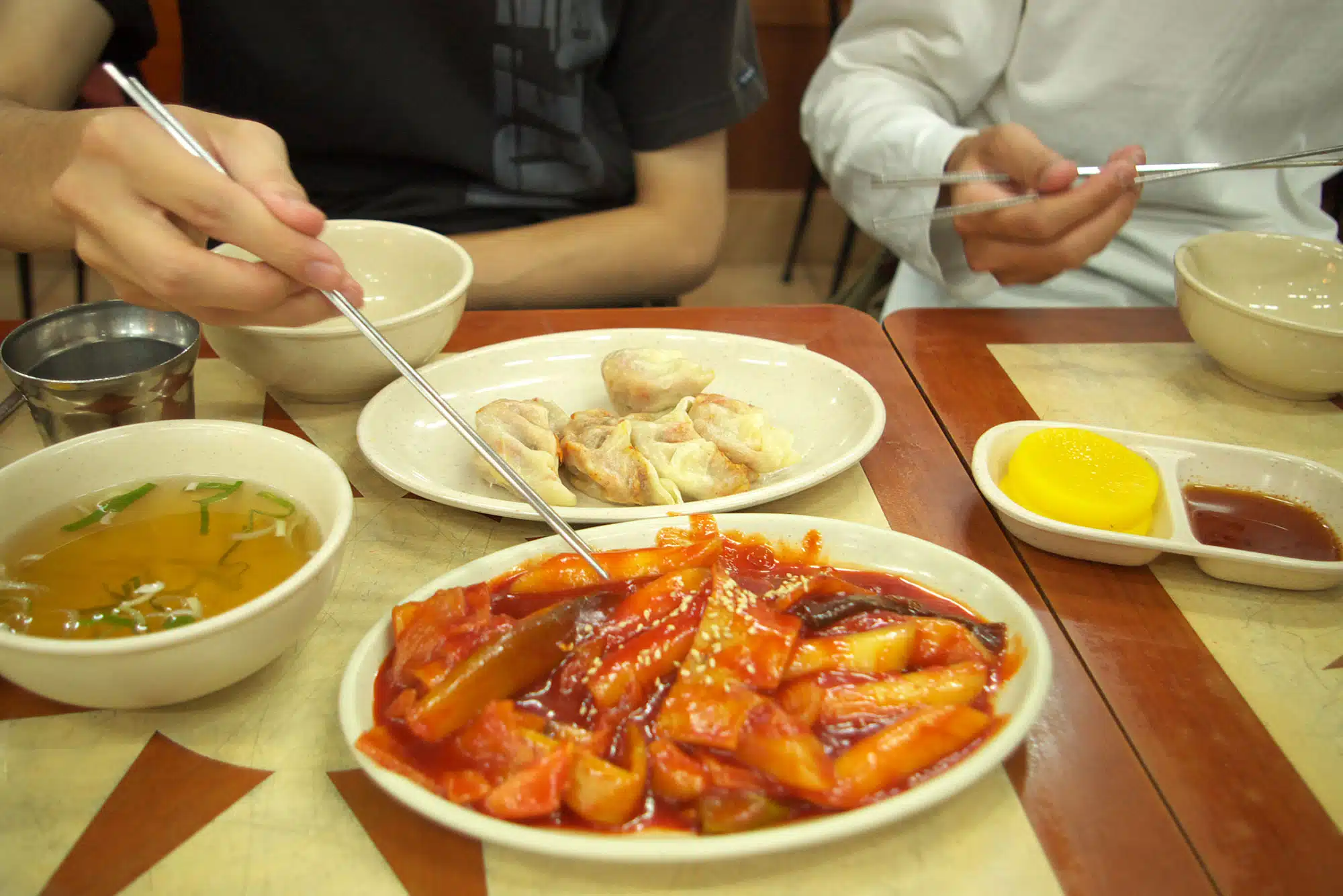Whether you’re at the beach, visiting a famous temple, or just walking down the street in South Korea, you’re sure to come across a Bunsikjip, or snack bar, serving a variety of local fast foods known as bunsik. Ranging from slick corporate eateries to tiny mom-and-pop operations, bunsikjip are South Koreans’ one-stop shop for hearty food on the go. Here are some classic items you’ll find at a bunsikjip:
Tteokbokki
Perhaps the most famous and beloved bunsik food, tteokbokki consists of bite-size pieces of glutinous rice cakes stewed in a sweet and spicy red sauce based on gochujang chili paste. Many bunsik add fishcake to the mix for a bit of protein, and common add-ons include instant ramyeon noodles and melted cheese. Tteokboki is sometimes very spicy, so be careful with your first bite
Soondae
I won’t lie: this one is a little weird for many Americans. Soondae is a sausage made of cellophane noodles soaked in pork blood, which turns black when cooked. It’s often served in little slices as an accompaniment to tteokbokki. It looks weird, but it tastes good! Blood sausage is also eaten in many other countries such as the UK, Spain, China, Latvia, and France, so you don’t need to be a vampire to enjoy it!
Corn Dogs
America may have invented the corn dog, but Korea really took it to the next level. Korean corn dogs are massive, golden-fried works of art that often feature extra ingredients like french fries or tater tots coating the outside of the batter. Sometimes the hot dog itself is made of fish or filled with cheese, so buyer beware: when you bite into a Korean corn dog, you may be in for a tasty surprise!
Eomuk
Eomuk means “fish paste”, and the bunsikjip version is usually formed into different shapes and cooked on skewers, either by frying or by simmering in a soy-based broth. It’s a warm and protein-packed snack for the winter months.
Kimbap
Adapted from Japanese maki sushi rolls, Korean kimbap (sometimes spelled “gimbap” consists of rice and seaweed rolled around any filling you could possibly imagine (usually several fillings per roll). Common fillings include tuna salad, egg omelet, ham, hot dog, and preserved vegetables including carrots, spinach, danmuji (pickled daikon radish), and kimchi. One major difference from Japanese sushi is that the rice in Gimbap does not contain vinegar – sesame oil and salt are the main seasonings – but trust me, there’s no shortage of flavor there. Another variation is samgak (“triangle”) kimbap, a triangular, seaweed-wrapped block of rice with fillings in the middle.
Twigim
“Twigim” roughly translates to the English word “fritters”, and similarly, it can refer to pretty much anything battered and fried. Popular twigim include peppers, squid, fish, green onions, chicken, vegetables, and…
Gimmari
Gimmari are a kind of a cross between twiggim and gimbap: rice or noodles wrapped in seaweed, breaded and fried.
So next time you’re in South Korea, make sure to check out a bunsikjip! My favorite is gimbap, but I recommend trying whatever’s fresh.
By Doerp Hoepgloefels












